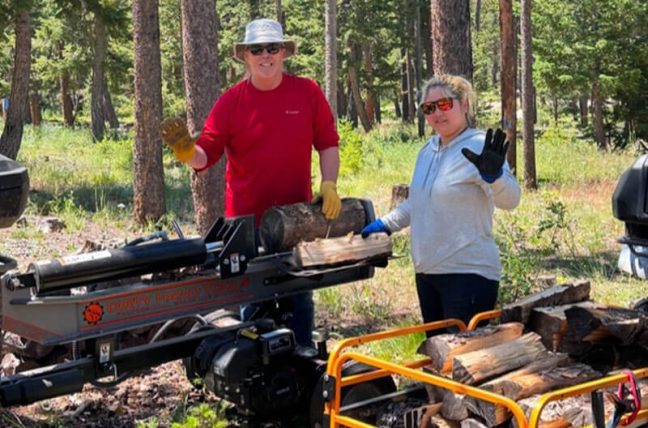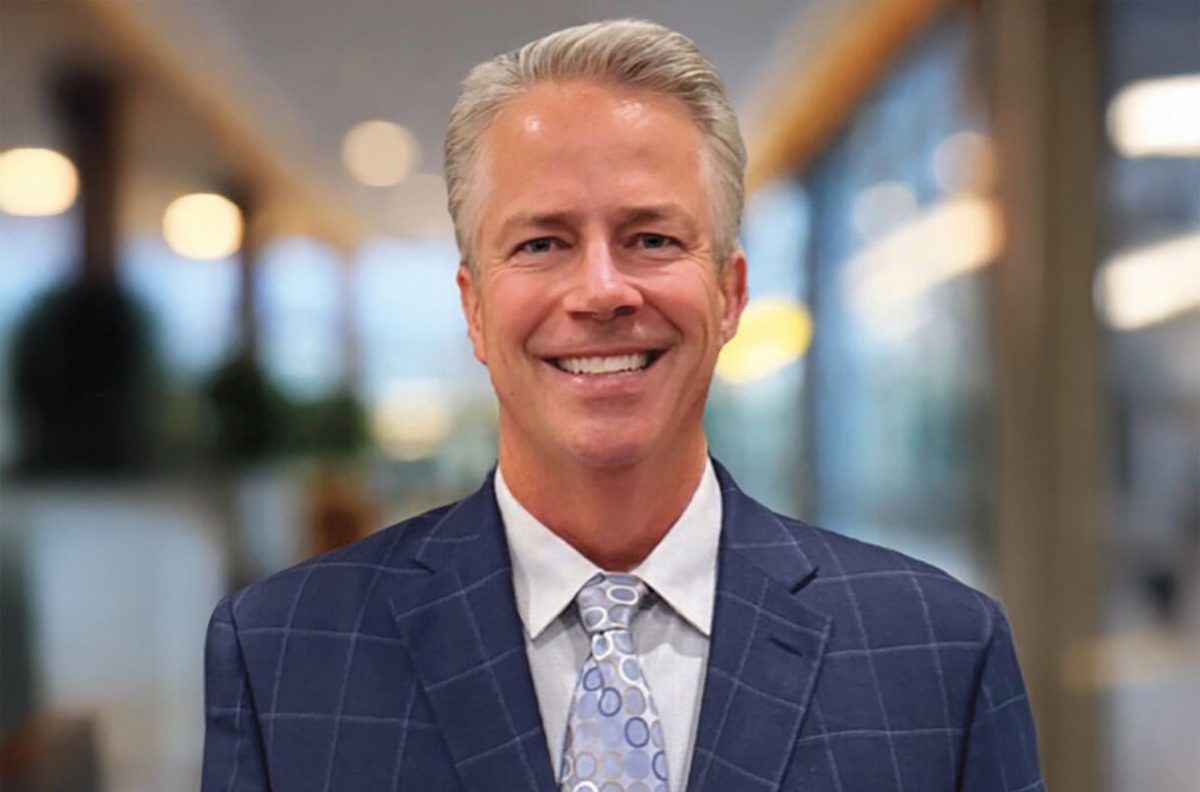by Steve Black
It was about 25 years ago that I had an awesome idea.
We lived in Oklahoma at the time and had always bought our firewood. Mesquite trees were an abundant nuisance to farmers that needed the land cleared to grow crops. Our boys were teenagers, and it made sense to me that we could cut our own firewood. After we had enough for our needs, we could make some money by selling the excess.
I did thorough research on the best chainsaw to purchase – promptly bought one, added an extra chain, a gas can, 2-cycle and chain oil and gloves. Living on 5 acres at the time, we already had a trailer to haul the wood and a truck to pull it. We were ready to go! (Or so I thought).
Living in the small rural community of Altus, all we had to do was ask our country neighbors for permission to cut mesquite trees on their property. They were happy to have someone clear their land for free. So with much anticipation at this easy way to have firewood and make money on the side, we planned our first outing.
Learnings from our first expedition:
- Mesquite trees have long, sharp thorns – 4 inches long. And they do not like people. So wear solid boots and have good gloves.
- Dead trees cut easier than live trees.
- There are many more branches to trim off and throw away than actual wood to burn.
- It’s a marathon, not a sprint, so pacing is important.
- Stop every hour and adjust the chain, add gas and chain oil.
- To be efficient, at least three people are needed – a cutter, someone to clear the brush and a stacker.
- Hydrate and take frequent breaks. We make better decisions when rested.
- Pack a lunch.
- When it’s taking a long time to cut down a tree, change out the chain.
- We changed our minds. It was unanimous. We won’t be making money on this adventure. There is too much hard work involved in the process, so now we will keep everything we cut.
After four hours of cutting, both chains were dull. Now what?
I learned there is a chain sharpener that can run off the battery of the truck. And the chain can be left on (not running, of course) and sharpened. Jackpot. We bought it and used it and were able to get a full day of cutting firewood in.

We made it a family event. Melanie, my wife; Taylor our daughter; the boys and I all began to go out and cut firewood on the weekends. At any given time, we had from six to 10 ricks of wood cut.
One of our funniest memories of cutting firewood was the time when Rod Smith, former music minister at First Baptist Church of Altus, wanted to join us. We met in one of the fields where we cut firewood. If you knew Rod, and his personality of doing everything fast and rolling with whatever happened, this story would make perfect sense.
We started out with Jared helping me and Travis helping Rod. Rod was like the Tasmanian devil, cutting down trees so fast that Travis couldn’t keep up. We heard a loud crash, looked over at where they were, a little afraid of what we might see.
Rod had cut a sizable mesquite tree down and it fell right smack dab on top of his truck. Travis was looking at us as if to say, “Can I get some help over here?”
Rod wasn’t fazed at all. He just continued to cut the tree off of his truck into fireplace-sized pieces. We’ve laughed about that many times over the years. We did have a lot of fun while working.
Now that we are back living full time in Colorado, we are supplying our own firewood again. Our property already had about 15 or so stacks of cut firewood on it, but it was stacked where the tree was cut down or fell.
We would just split, haul, stack and cover our firewood to protect it from the winter elements. Through the past 10 years, we’ve learned to fell 50- to 60-foot-tall dead or leaning pines and know where they will safely fall. Then we buck the wood and stack it to season where we will later split it.
When the snow swirls around and the winds howl during the bitter cold of winter, there is a certain sense of pride knowing our home is heated with wood we fell, cut, bucked and split.
[RELATED: New Year, Fresh Start – ‘Hope’ As Positive Attitude Can Help Guide Leaders]
I went out and bought the biggest axe I could find to split the wood after we had cut down several trees and were ready to get the stacks ready for a long cold winter.
Another lesson we quickly learned the hard way – when there is a bunch of firewood to be split, get a gas splitter.
We could have never split all the wood we’ve burned the last several winters in Colorado by using an axe. (Unless you don’t have a full-time job.) Work smarter, not harder. Know the limits.
We have learned living at an elevation of 8,300 feet in the Rocky Mountains, that the wood should be kept close to the house and covered. We learned this when we got our first 20-plus inch snowfall.
To maintain a good fire over an entire day, start with a good mix of split smaller pieces of aged wood. Then switch to larger pieces – round whole logs, if possible – that burn slower. This process will help the wood last longer and keep a steady warmth.
Here are my business learnings from cutting firewood:
- Theory is trumped by experience. Respect those who have been doing it for years.
- Know the purpose, have the right equipment and plan for equipment failure (have backup equipment).
- Sometimes the harder we work, the less we produce (keep the chain sharp and be situationally aware).
- Teach the team how and why. Then listen and be open to input. They can – and will – help make it a true team effort. (I learned more from my boys than I thought I would.)
- Take breaks – no one is Superman or Superwoman.
- A good mix of experience is needed to have success and consistency. There is usually more than one way to get things successfully accomplished.
- New meaning to “work smart, not hard” – Before we can work smart, we must work hard and learn along the way. I’ve always said that the grocery business is not for the weak, and we all know how much hard work is involved.
Now, to bring this together for our purposes here.
Describing the process of cutting firewood sure feels like what it’s like to be in the grocery business.
By far, the biggest takeaway is the continual learning.
With all the turnover we’ve experienced in these post-COVID-19 years, we have to invest in our teams and help them keep their chains sharp.
Our job as leaders is to make sure our team has the training and knowledge needed. We have to make sure we set them up for success and be the leader we wish we’d had in our early years.
If we learn ways to be successful when we’re young, those learnings just get better over time.
I’m honored and excited to have been named an NGA-endorsed leadership coach this month and would love to share 48 years of “continued learnings” on how to keep the chain sharp with you and your teams.
Steve Black is CEO and founder of abrighterday.life, a business and leadership coaching organization devoted to helping people and companies with personal growth and implementing simple leadership principles. A 47-year-veteran of the retail grocery arena, Black is the author of “The 5 Rules” and offers an online Masterclass.

